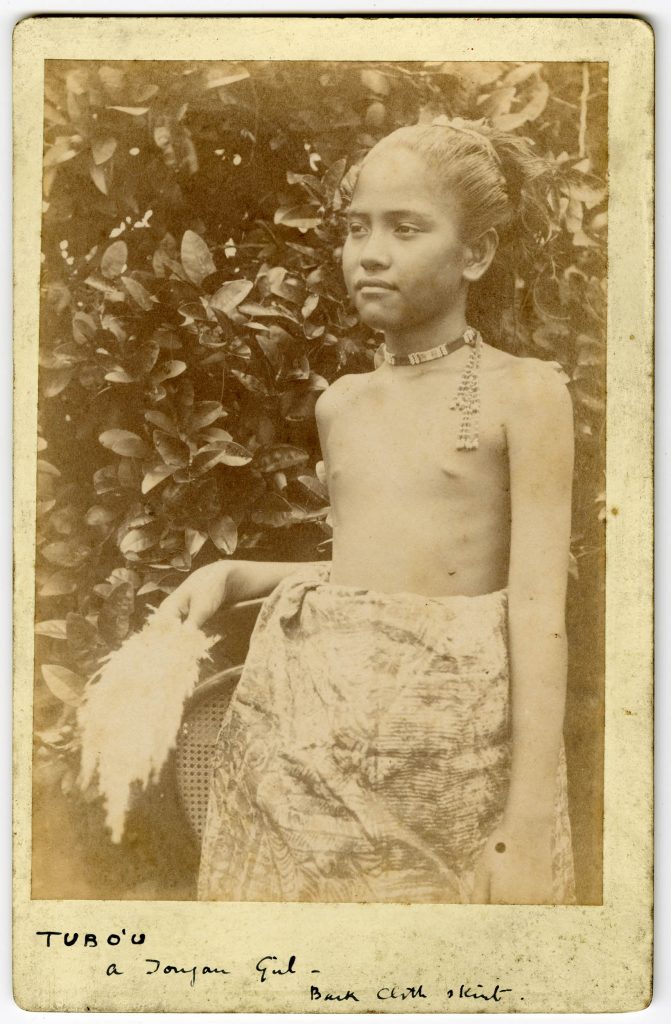
Photograph (black and white); cabinet card; a girl, Tubo’u, Tonga. Albumen print. Oc,B46.27, AN499658001.
Postcards were popular ways for photographers to send images of the Empire back to the home country. The cabinet card style of portraiture became fashionable from about 1870. Images of colonized landscapes and people helped those back home to take ownership and believe they had a bit of understanding of faraway places and cultures. Very often, it was young women or girls who were photographed to demonstrate the perceived vulnerability and exotic, coquettish ways of the colonies. These females become unknown symbols of submission.
But least we know her name: Tubo’u. Here, she is posing by dense foliage to show her closeness to nature. She wears a necklace made of shells in the style of a choker, which can allude to bondage or subservience. Her skirt is made of bark cloth, or tapa. Bark cloth was the primary material for clothing in many Polynesian islands before Europeans arrived. It could be a piece she helped make, since girls learned from a very young age how to pound out the cloth and paint traditional designs. Tubo’u is holding some sort of flower or plant as she is leaning up against a chair.
And she is topless. This should not come as much of a surprise for several reasons. Young children in Polynesia would not have worn much at this time. Until they were told to cover up and given Western style clothes, many Polynesians wouldn’t have bothered. Her nakedness is meant both to remind the audience of her “savagery” and to titillate them. Nothing about the pose or costume really teaches the viewer something about Polynesia. It is more suggestive of the tropical “delights” that are waiting for Europe to indulge in or civilize, by whatever means desired.
Tonga was never colonized by the British. However, they did have a “friendly” agreement to control their foreign policy. Girls were used both literally and symbolically to represent innocence and simplicity throughout the British Empire program. This image of Tubo’u is part of a patriarchal system to feminize the Pacific to make it seem weak and in need of guidance from the mother country. This strategy is still used today: when people want to make something look weak, they associate it with a girl.
-Ashley E. Remer
Head Girl
Girl Museum Inc.
This post is part of our 52 Objects in the History of Girlhood exhibition. Each week during 2017, we explore a historical object and its relation to girls’ history. Stay tuned to discover the incredible history of girls, and be sure to visit the complete exhibition to discover the integral role girls have played since the dawn of time.
